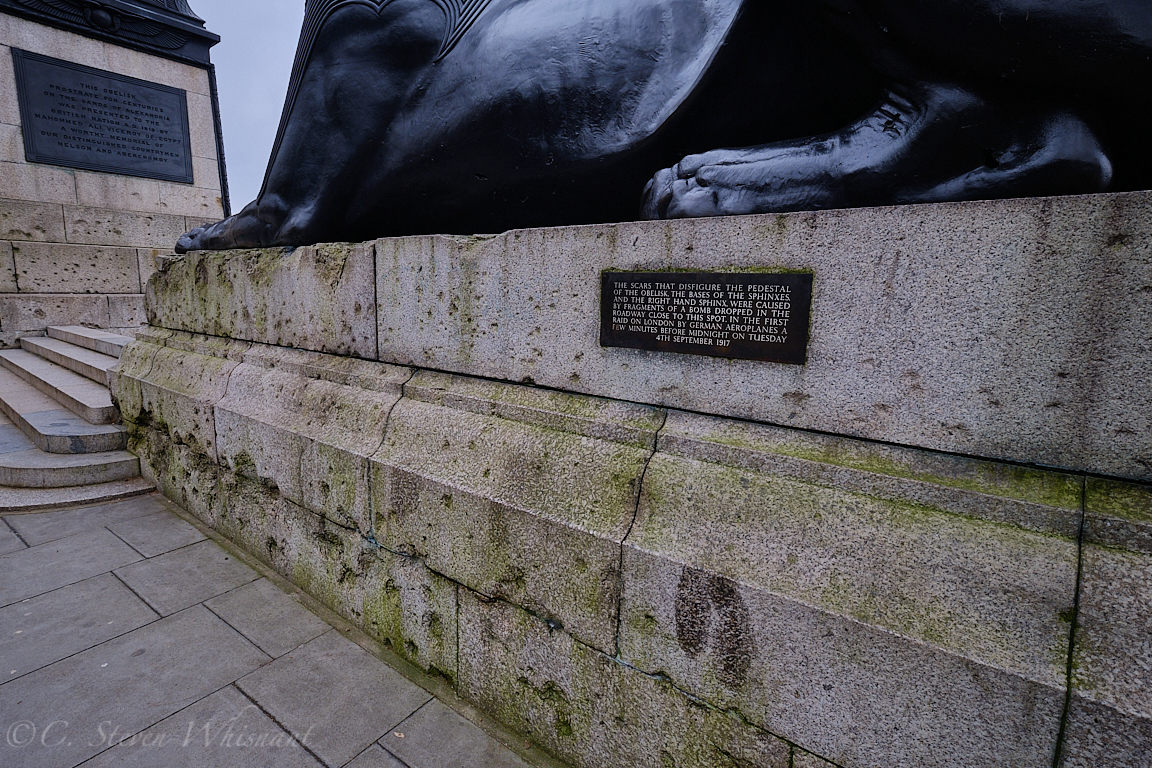Along the Thames, just south of Trafalgar and Covent Garden, lies the Embankment. Here we find a statue of Robert Raikes. If you ever sat in sunday school bored out of your mind, this is the fellow to blame, apparently.
Upstream a little, we see the London Eye and farther away, Big Ben and Parliament.
But the reason we came down to this bank of the river was to see Cleopatra's Needle. It is guarded by a sphinx on either side (for some reason facing the stone column rather than looking away to actually guard it). These creature sure seem to have long tails. By my estimation, this fellows tail would be dragging in in the sand if he were to relax a little.
From Wikipedia we learn that there are three such named stone columns in the city. How this one got here is a story worth the telling. Thutmose III erected this originally in about 1450 BCE in the Egyptian city of Heliopolis. He had the center column of the inscriptions on each face added. About 200 years later, the columns of text on either side were added by Ramesses II. Then in 12 BCE it was moved by the romans to the Caesarium , a temple built to honor Anthony and Cleopatra. This was during the reign of Augustus.
...was presented to the United Kingdom in 1819 by the ruler of Egypt and Sudan Muhammad Ali, in commemoration of the victories of Lord Nelson at the Battle of the Nile and Sir Ralph Abercromby at the Battle of Alexandria in 1801. Although the British government welcomed the gesture, it declined to fund the expense of transporting it to London.In 1877, Sir william James Erasmus Wilson paid out of his own pocket to have it moved and set up in London. It was dhe sand where it was dug out the sand where it was buried, put in an iron cylinder, and loaded onboard barge to be towed by the Olga.
In the Bay of Biscay, on October 14, 1877, the ship encountered a storm. the ship and the barge began to founder, some sailors were lost at sea, and the ship was abandoned. But it did not sink. Four days later, the ship and barge were found intact by a Spanish trawler. A salvage claim was made by the captain of the trawler and had to be settled before the stone could be brought to London.
The sphinx on the upstream side of the column has a plaque that says:
The scars that disfigure the pedestal of the obelisk, the bases of the sphinxes and the right hand sphinx were caused by fragments of a bomb dropped in the roadway close to this spot in the first raid by German aeroplanes a few minutes before midnight on 4h September 1917.
Along the street, we find this more modern column that supports a street light.
Looking downstream, we can see the Shard in the distance just touching the clouds. Lots of history in this city... both old and new.








No comments:
Post a Comment
We enjoy hearing from our readers.